|
|
NYSG's Social Media Review: Late November 2016
By Paul F on Nov 22, 2016 at 11:39 AM
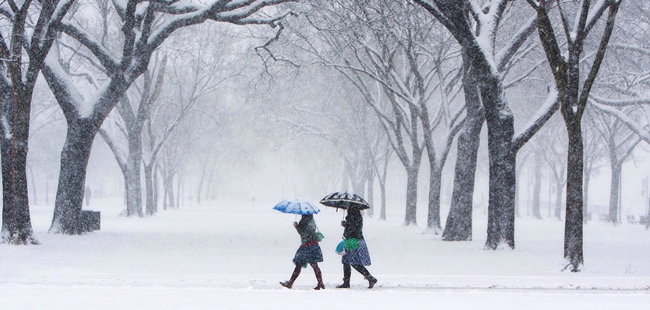
A superstorm on Washington D.C.'s National Mall in March 2015. Photo: Eric Druxman.
The Winter Outlook, according to the National Oceanic and Atmospheric Administration's National Weather Service: A warmer, drier South and a cooler, wetter North is predicted; Drought is expected to persist in California and expand in the Southeast: http://ow.ly/xm8W306jwF9.
There's also a video summary of the report, which was released in late October: http://ow.ly/Onfx306jwRj.
Also: For those who haven't already experienced a first snow of the season, you can zoom straight to your town with NOAA Climate.gov's interactive map and see when you'll see some snowflakes: http://ow.ly/sc6a306qae6.
And: On November 10th NOAA scientists declared the arrival of La Nina today, calling it present, but weak. It is predicted to be short-lived, possibly only lasting a few months. The climate phenomena will likely contribute to drier and warmer weather in the southern U.S. and wetter, cooler conditions in the Pacific Northwest and across to the northern tier of the nation this winter: http://www.noaa.gov/news/hello-la-nina.
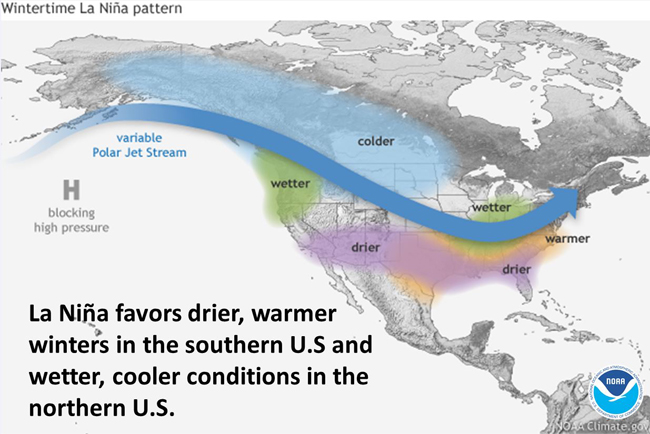
Top 10 Trending News Stories from NOAA's New York Sea Grant ...
(1) IT'S THE LAW >>> As of November 1st (and through May 1st) boaters, canoeists, kayakers, anglers and hunters who enjoy being on the water be aware that New York State law requires anyone in a boat that is less than 21 feet long on New York waters to wear a Coast Guard-approved flotation device: seagrant.sunysb.edu/articles/r/2695.
(2) A CHANGING OCEAN >>> $800K in new NOAA Sea Grant studies from Maine to New York will help investigators gain a better understanding of the effects ocean changes have the U.S. Northeast's marine life: seagrant.sunysb.edu/articles/r/2686. NYSG's research projects were also featured in Stony Brook University's e-newsletter, Happenings: seagrant.sunysb.edu/articles/r/2689.
(3) SEAFOOD EAT FOOD >>> This early November NYSG-led workshop on local, fresh and safe seafood focused on an upcoming generation of seafood consumers who value locally grown and healthful food. "Millennials are well educated, highly connected, eat out more often and seek adventure and creativity in the food they eat," says NYSG Seafood Safety and Technology Specialist Michael Ciaramella: seagrant.sunysb.edu/articles/r/2694.
Also: New additions to our refreshed seafood publications section include a "Seafood and You" brochure and two postcard series, one on seafood nutrition and another on identification, handling and preparation: www.nyseagrant.org/seafood - see "Publications" in the left-side navigation menu.
(4) FROM HURRICANES TO SNOW STORMS >>> Although the Atlantic hurricane season is winding down (it officially ends on November 30th), the U.S. faced a considerable foe in Hurricane Matthew in early October.
The southeastern U.S. was then hit hard by Hurricane Matthew as it moved very close to the coasts of Florida, Georgia, South Carolina and North Carolina. Matthew made one official U.S. landfall on Oct. 8 southeast of McClellanville, South Carolina, as a Category 1 hurricane with 75 mph winds. While Matthew was declared post-tropical by NOAA's National Hurricane Center as it moved away from North Carolina on Oct. 9, many places from Virginia down through parts of Florida were impacted by high winds (ranging from around 60 - over 100 mph) and strong surf, storm surge and severe rainfalls (from over 5 - nearly 17 /12 inches). Savannah International Airport had their second wettest calendar-day rain on record dating to 1871 on October 7.
Sea Grant helps to raise awareness on the topic via blog posts such as "Be Aware, Be Strong, Be Prepared," www.seagrant.sunysb.edu/blog/25.
On November 1st, NYSG and The Science and Resilience Institute at Jamaica Bay co-hosted the first in a series of NYC-based climate forums. This one focused on the transition between hurricane and snow storm season. For more, including a profile of NYSG's Jamaica Bay Specialist Helen Cheng, see seagrant.sunysb.edu/articles/r/2691.
In other NYC storm awareness news, NYSG is partnering with NOAA and the Federal Emergency Management Agency on a project to install new high water mark and evacuation signs that help raise awareness of coastal storms. For more on this effort, including audio and video clips, see www.seagrant.sunysb.edu/articles/r/2662.
Providing emergency managers with the tools they need to best communicate with the public about preparing for storms such as Hermine is the hallmark of NOAA Sea Grant's Coastal Storm Awareness Program, the efforts of which are detailed in a short documentary and trailer. Learn more at www.nyseagrant.org/csap.
(5) UNWANTED MEDS >>> Although "National Drug Take-Back Day" was in late October and the next one isn't until Spring 2017, NYSG offers some helpful tips on hw you might best clean out your medicine cabinet: seagrant.sunysb.edu/articles/r/2690 and NYSG's www.nyseagrant.org/unwantedmeds.
(6) LAKE ERIE OUTREACH >>> In late September our Senior Education Specialist Helen Domske gave a "Lake Erie: Yesterday, Today and Tomorrow" presentation at The Lake Erie Seaway Trail Center in Hamburg, NY. For more on the topic, including related fact sheets and news, see seagrant.sunysb.edu/articles/r/2688.
(7) GREAT LAKES FISHERIES >>> We're in the process of interviews for a new Great Lakes Fisheries and Ecosystem Health Specialist. Stay tuned in the coming months for an announcement as we seek to fill this full-time, SUNY Oswego-based position. In the meantime, you can see more on this topic at www.nyseagrant.org/glsportfish.
(8) SEA GRANT AT 50 >>> We continue our commemoration of "SeaGrant50," the year-long anniversary campaign, by featuring some related coastal effort milestones - both statewide and nationally - on our blog, www.nyseagrant.org/blog.
(9) E-NEWS >>> Check out an archive of our newsletter, NY Coastlines / Currents, the latest of which was e-distributed this past summer: www.nyseagrant.org/nycoastlines. While you're there, you can also sign up (if you haven't already done so) to receive our next issue, slated for release in late winter / early spring 2017.
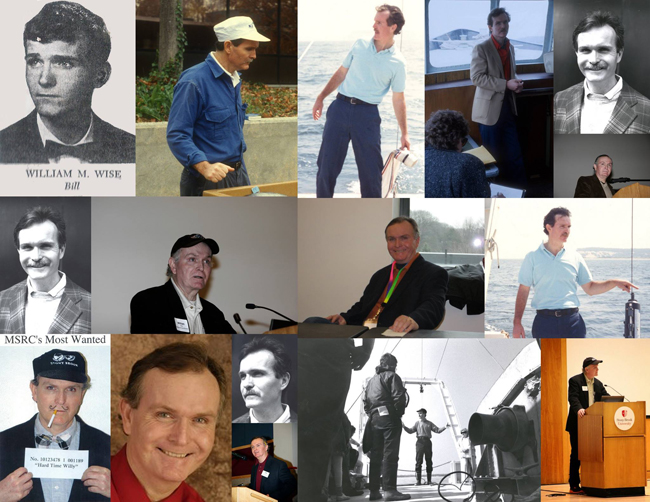
(10) THANK YOU >>> Just in time for Thanksgiving, NYSG's Director Bill Wise was recognized for his 28+ years of service to the School of Marine and Atmospheric Sciences (SoMAS) at Stony Brook University, where he and NYSG's administrative offices are located. Wise was first a students (1973-1975), later a Associate Dean at SoMAS and most recently NYSG's director. "Though Bill has been the Director of New York Sea Grant since 2013, he still remains an important person in the SoMAS community," said a SoMAS rep. "So, we thank you, Bill, for your past and continued service."
Top 12 Trending News Stories from NOAA ...
(1) ENVIRO ECONOMICS >>> Discover three ways the ocean and Great Lakes help keep the U.S. economy afloat, as detailed in a new report from NOAA Digital Coast & National Ocean Service: http://ow.ly/7Sjl306qaIN.
(2) CLIMATE AND LOBSTERS >>> New England communities are on watch as ocean warming drives #lobsters north. More from NOAA's Climate.gov: http://ow.ly/xmty306jxGw.
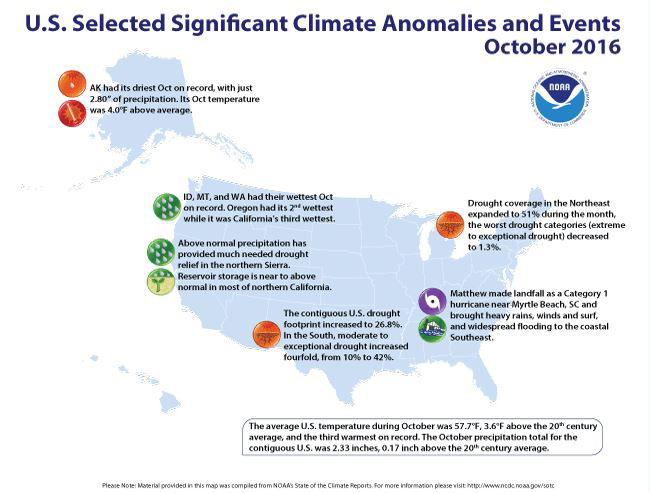
(3) U.S. CLIMATE >>> The contiguous United States saw its third warmest October in 2016. The warmer than average October contributed to the second warmest year-to-date (January–October) for the Lower 48. More in NOAA's October 2016 U.S. State of the Climate Report: http://ow.ly/rE9J306judD.
(4) SEVERE STORMS >>> "Measuring Hurricane Matthew's storm surge impact: A photo story," http://ow.ly/KLGj306jv1j.
Also: See before and after aerial maps of communities before and after Matthew's impact: http://ow.ly/kGqr306jy76.
(5) GLOBAL CLIMATE >>> According to the October 2016 Global Climate Report, the global temperature over land and ocean surfaces tied with 2003 as the third highest on record for the month of October. The year-to-date (January-October) global temperature remained the highest on record: http://ow.ly/UJkF306jtcc.
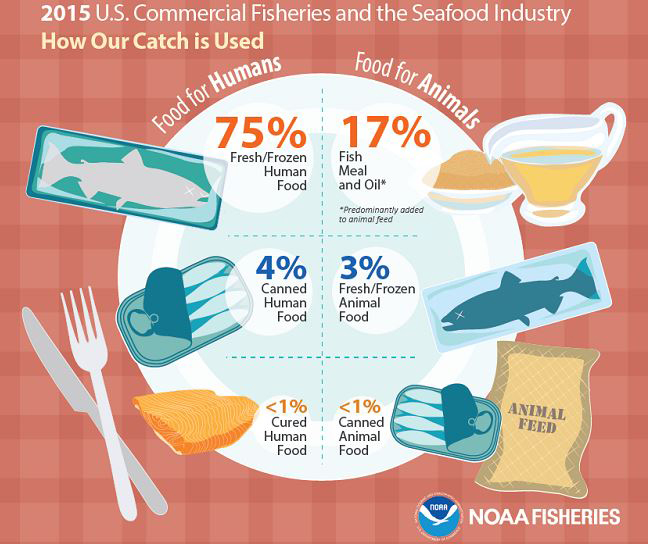
(6) SEE-FOOD >>> America, you added nearly 1 pound of #seafood to your diet in 2015—Check out more stats from NOAA's annual Fisheries of the United States Report: http://ow.ly/dab3306jvRE.
Also: A blog by two NOAA employees: Get Jennie and Kate's tips and tricks for cooking fish for picky kids and choosing seafood on a budget: http://ow.ly/jp8l306jxfK.
And: NOAA Fisheries congratulates the White House “Champions of Change for Sustainable Seafood”—12 extraordinary individuals being recognized for their leadership, innovation, and commitment to U.S. fisheries and seafood: www.whitehouse.gov/champions.
(7) U.S. DROUGHT >>> Looking to December 2016 - February 2017, forecasters with NOAA's National Weather Service predict drought to develop in parts of southwest and southeast, and persist or intensify in New England and central and Southern California this winter. Drought improvement or removal is likely in Northern California, western Oregon and much of New York: http://ow.ly/X4Dj306jr6S.
Also: According to the November 15th U.S. Drought Monitor, moderate to exceptional drought covers 30.1% of the contiguous United States, an increase from last week’s 27.4%. The worst drought categories (extreme to exceptional drought) also increased from 5.0% last week to 6.4%: http://ow.ly/RsSS306qcVm.
And: In the latest Beyond the Data blog, NOAA's Climate.gov focuses about the climate condition that no one is giving thanks for: drought in the Southeast and Southern Plains: http://ow.ly/SBLe306qcCy.
(8) AIR ALERT >>> Carbon dioxide levels in Earth’s atmosphere passed a troubling milestone for good this summer and locked in levels of the heat-trapping gas not seen for millions of years: http://ow.ly/jZKa306q9Ik.
(9) HAVE YOU BEEN HERE >>> NYC's High Line is a public park created from an abandoned elevated freight line that harnesses the power of nature -- trees and other vegetation -- to give the public a cool getaway in the face of climate warming of America’s largest city: http://ow.ly/f8W5306jzQj. The U.S. Climate Resilience Toolkit's new "Built Environment" feature helps urban planners here and in other cities to build community resilience to climate change and its impacts: http://ow.ly/V9ES306jzJG.

The rasping mouth of the sea lamprey, an infamous Great Lakes invader. Photo: Ted Lawrence/Great Lakes Fishery Commission.
(10) GREAT LAKES INVADER >>> The sea lamprey—an ancient Atlantic fish that wreaked havoc on the Great Lakes—may be America's first destructive invasive species: http://ow.ly/4Qzt306jvtw.
(11) POWER OF WATER >>> It doesn’t take much water to carry you away, whether you’re on foot or in a vehicle. NOAA reminds you: NEVER drive or walk into floodwaters. Turn Around Don’t Drown: http://tadd.weather.gov.
(12) VISIT AN ESTUARY >>> Although National Estuaries Week was in late September, it's always the time to visit one of the nation's estuaries. Find one near you: https://coast.noaa.gov/nerrs.
---
On www.nyseagrant.org ...
- Our "Trending Topics," such as climate change and green tips for coastal living, via a section on our homepage, www.nyseagrant.org.
- For the latest news from NYSG, check out our 'Currents' section, www.nyseagrant.org/currents, as well as our 'by-topic' archives, www.nyseagrant.org/currentsarchive.
- To keep tabs on all of NYSG's coastal science news, follow us on Facebook (www.facebook.com/nyseagrant), Twitter (www.twitter.com/nyseagrant) and YouTube (www.youtube.com/nyseagrant); Subscribe to our free news feeds (click the orange & white icon in the "Follow Us" navigation bar at www.nyseagrant.org); Sign up for our e-list in a few quick clicks at www.nyseagrant.org/nycoastlines. Our flagship publication, NY Coastlines / Currents, is published 1-2 times a year.
|